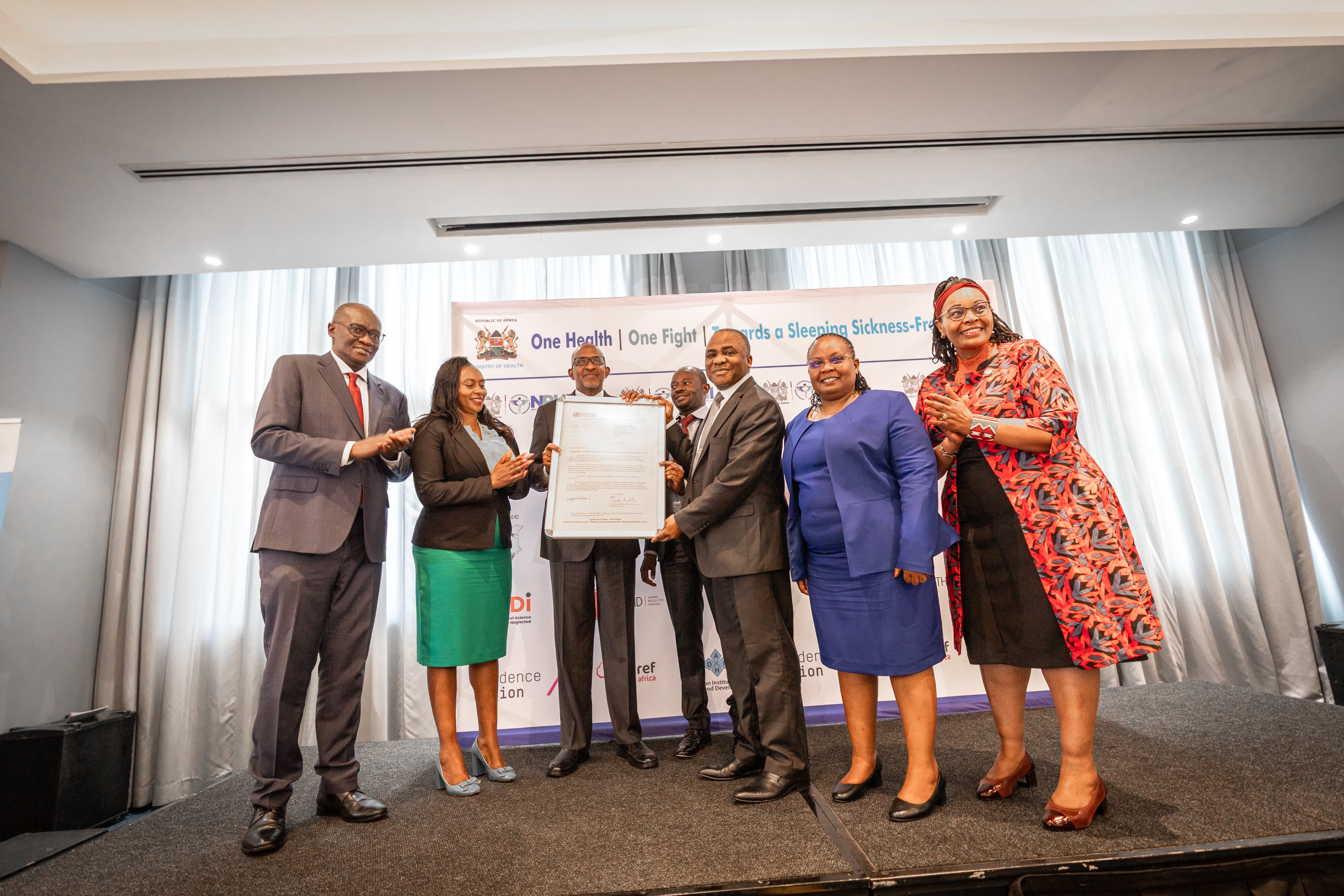
World Health Day: What you need to know
Celebrated every year on April 7
It's the second neglected tropical disease to be eliminated in Kenya after Guinea worm in 2018.
In Summary

Audio By Vocalize
 Health officials, led by CS Aden Duale, receive the validation from WHO declaring Kenya free of human African trypanosomiasis (HAT), also known as sleeping sickness, on August 8, 2025. /WHO
Health officials, led by CS Aden Duale, receive the validation from WHO declaring Kenya free of human African trypanosomiasis (HAT), also known as sleeping sickness, on August 8, 2025. /WHOKenya has been officially declared free of human African trypanosomiasis (HAT), also known as sleeping sickness, as a public health problem.
The World Health Organisation (WHO) made the announcement on Friday, effectively making Kenya the tenth country in the world to achieve this milestone.
Kenya joins Benin, Chad, Côte d’Ivoire, Equatorial Guinea, Ghana, Guinea, Rwanda, Togo and Uganda in eliminating sleeping sickness as a public health problem.
HAT becomes the second neglected tropical disease (NTD) to be eliminated in Kenya, following the eradication of Guinea worm disease in 2018.
“I congratulate the government and people of Kenya on this landmark achievement,” WHO Director General Tedros Ghebreyesus said in a statement.
“Kenya joins the growing ranks of countries freeing their populations of human African trypanosomiasis. This is another step towards making Africa free of neglected tropical diseases.”
HAT is a vector-borne disease caused by the blood parasite Trypanosoma brucei and transmitted to humans through the bites of infected tsetse flies.
Rural communities reliant on agriculture, fishing, animal husbandry or hunting are most at risk.
The Rhodesiense form of the disease, found in eastern and southern Africa, is the only type present in Kenya.
Caused by Trypanosoma brucei rhodesiense (r-HAT), it is fast-progressing, attacking multiple organs, including the brain, and, without treatment, can be fatal within weeks.
The first cases of HAT in Kenya were detected in the early 20th century.
Through decades of consistent control efforts, no indigenous cases have been reported in more than ten years.
The last locally transmitted case was recorded in 2009, while the final two exported cases—linked to infections in the Masai Mara National Reserve—were detected in 2012.
“This validation marks a major public health milestone for Kenya, as we celebrate the elimination of a deadly disease in our country. The achievement will not only protect our people but also pave the way for renewed economic growth and prosperity,” Health Cabinet Secretary Aden Duale said.
“This follows many years of dedication, hard work and collaboration.”
Kenya has strengthened its surveillance in 12 health facilities across six historically endemic counties, designating them as sentinel sites.
These facilities have been equipped with diagnostic tools and staffed with trained personnel capable of carrying out the most sensitive and practical tests for r-HAT.
The country also monitors tsetse fly populations and animal trypanosomiasis both within and beyond previously affected areas, with support from the Kenya Tsetse and Trypanosomiasis Eradication Council (KENTTEC) and national veterinary authorities.
“This key milestone reflects Kenya’s efforts and commitment over many years, as a collaboration between national and county governments, national research institutions, development partners and affected communities,” Director General of Health Dr Patrick Amoth said.
"The country remains fully committed to sustaining the quality of care and surveillance in line with WHO’s recommendations.”
With support from WHO and partners, including FIND, Kenya’s HAT elimination programme will now enter a post-validation surveillance phase to guard against any resurgence or reintroduction of the disease.
WHO will maintain monitoring in previously affected areas and keep a stock of medicines—donated by Bayer AG and Sanofi—for rapid treatment if new cases occur.
“This success was made possible by the Ministry of Health’s leadership, the dedication of health workers in areas at risk and the support from key partners,” said Dr Abdourahmane Diallo, WHO Representative to Kenya.
“WHO is proud to have contributed to this achievement and encourages all stakeholders to remain involved in post-validation monitoring.”
In total, 57 countries have now eliminated at least one neglected tropical disease.

Celebrated every year on April 7